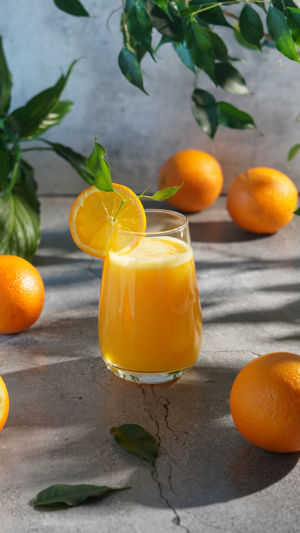In recent years, juicing has gained popularity as a convenient way to consume fruits and vegetables. However, the process of juicing can significantly affect the nutritional content of produce.
Understanding these changes and learning how to maximize the nutritional value of your juice is crucial for anyone looking to incorporate juicing into a healthy lifestyle.
Let's explore the nutritional differences between whole fruits and their juiced counterparts, and discover practical tips to maintain the highest possible nutritional content in your homemade juices.
<h3>Fruits vs. Juice: A Nutritional Comparison</h3>
While both whole fruits and fruit juices offer vitamins and minerals, there are notable differences in their nutritional profiles:
<b>1. Fiber Content:</b> Whole fruits contain significant amounts of dietary fiber, which is largely lost in the juicing process. Fiber aids digestion, promotes feelings of fullness and helps regulate blood sugar levels.
<b>2. Sugar Concentration:</b> Juices typically contain more concentrated sugars than whole fruits, as the fiber that normally slows sugar absorption is removed.
<b>3. Calorie Density:</b> Juices are often more calorie-dense than whole fruits due to the concentration of sugars and the removal of fiber.
<b>4. Vitamin and Mineral Content:</b> Many vitamins and minerals remain intact during juicing, but some nutrients, particularly those found in the skin and pulp, may be lost.
Despite these differences, juicing can still be a valuable addition to a balanced diet, especially for those who struggle to consume enough fruits and vegetables. The key is to maximize the nutritional content of your juices through mindful preparation and consumption.
Best Way to Store Fresh Juice for 7 Days & Preserve Nutrition
Video by DiscountJuicers.com
<h3>Practical Tips for Maintaining Juice Nutrition</h3>
<b>1. Choose a Slow Juicer:</b> Opt for a masticating or cold-press juicer instead of a centrifugal one. These juicers generate less heat and oxidation, helping to preserve more nutrients.
<b>2. Include the Pulp:</b> Where possible, blend some of the pulp back into your juice to increase fiber content and retain more nutrients.
<b>3. Add Lemon:</b> A squeeze of lemon can help preserve nutrients and add vitamin C to your juice.
<b>4. Keep the Skin On:</b> Many nutrients are concentrated in or just under the skin of fruits and vegetables. When safe and appropriate, juice produce with the skin on.
<b>5. Drink Immediately:</b> Consume your juice as soon as possible after juicing. Nutrients begin to degrade upon exposure to air and light.
<b>6. Store Properly:</b> If you must store juice, do so in an airtight container filled to the brim to minimize air exposure. Keep it refrigerated and consume within 24 hours.
Juicing offers a convenient and tasty way to increase your consumption of fruits and vegetables. By understanding the nutritional differences between whole fruits and juices, and implementing strategies to maximize nutrient retention, you can enjoy the benefits of juicing while maintaining the highest possible nutritional value. Whether you're a juicing novice or a seasoned enthusiast, these tips will help you get the most out of your juicing experience, ensuring that each glass is packed with nature's goodness.





